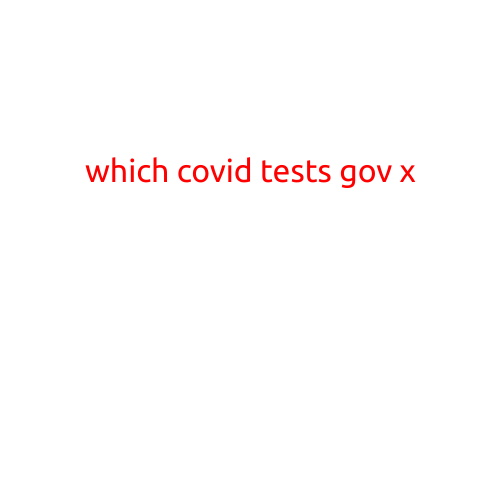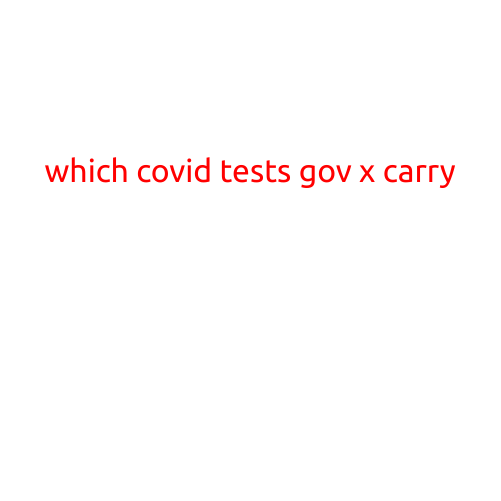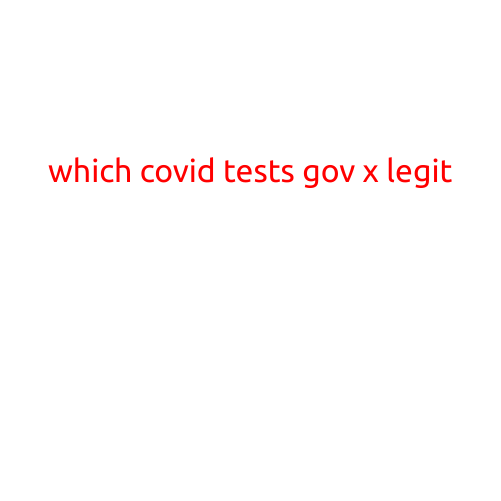
Which COVID-19 Tests: A Comprehensive Guide
As the world continues to battle the COVID-19 pandemic, one of the most common questions that arise is which COVID-19 tests are effective and reliable. With so many types of tests available, it can be overwhelming to determine which one is right for you. In this article, we will explore the different types of COVID-19 tests, how they work, and their benefits and limitations.
Types of COVID-19 Tests
There are several types of COVID-19 tests, each with its unique characteristics and applications. Here are some of the most common tests:
- Rapid Antigen Tests (RATs): These tests detect specific proteins on the surface of the SARS-CoV-2 virus. They are often used in point-of-care settings, such as hospitals, clinics, and testing centers. RATs provide quick results, usually within 15-30 minutes.
- Reverse Transcription Polymerase Chain Reaction (RT-PCR) Tests: These tests detect genetic material (RNA) from the SARS-CoV-2 virus. They are considered the gold standard for diagnosing COVID-19 and are widely used in laboratories. RT-PCR tests provide highly accurate results, but they often take longer to process, typically 2-5 days.
- Lateral Flow Tests (LFTs): These tests use a combination of antibodies and antigens to detect the presence of SARS-CoV-2. They are similar to RATs but provide more sensitive results. LFTs are often used in self-testing settings.
- Immunoassay Tests: These tests detect antibodies produced by the body in response to the SARS-CoV-2 virus. They are used to diagnose past infections and can help identify individuals who have developed immunity.
- Serum Tests: These tests detect the presence of antibodies in blood samples. They are often used to diagnose past infections and monitor the progression of the disease.
How COVID-19 Tests Work
Each COVID-19 test works differently, but they all share a common objective: to detect the presence of the SARS-CoV-2 virus or its genetic material. Here’s a brief overview of how each test works:
- Rapid Antigen Tests: A swab is inserted into the nasal cavity or throat to collect a sample. The sample is then mixed with antigens and antibodies, and if the virus is present, it will bind to the antigens, resulting in a positive test.
- Reverse Transcription Polymerase Chain Reaction (RT-PCR) Tests: A swab is inserted into the nasal cavity or throat to collect a sample. The sample is then mixed with primers and probes, and if the virus is present, it will bind to the primers and probes, resulting in a positive test.
- Lateral Flow Tests (LFTs): A swab is inserted into the nasal cavity or throat to collect a sample. The sample is then mixed with antigens and antibodies, and if the virus is present, it will bind to the antigens, resulting in a positive test.
- Immunoassay Tests: A blood sample is collected, and the antibodies present are detected using an immunoassay. If the antibodies are present, it indicates that the individual has had a past infection.
- Serum Tests: A blood sample is collected, and the presence of antibodies is detected. If the antibodies are present, it indicates that the individual has developed immunity.
Benefits and Limitations of COVID-19 Tests
Each COVID-19 test has its benefits and limitations. Here are some of the most significant advantages and disadvantages of each test:
- Rapid Antigen Tests: Quick results (15-30 minutes), easy to perform, and relatively inexpensive.
- Limitations: May produce false-negative results, especially in the early stages of infection.
- Reverse Transcription Polymerase Chain Reaction (RT-PCR) Tests: Highly accurate results, wide availability, and commonly used in laboratories.
- Limitations: May produce false-negative results, especially in cases of mild or asymptomatic infections.
- Lateral Flow Tests (LFTs): Fast results (15-30 minutes), easy to perform, and relatively inexpensive.
- Limitations: May produce false-negative results, especially in the early stages of infection.
- Immunoassay Tests: Provides information on past infections, easy to perform, and relatively inexpensive.
- Limitations: May not detect current infections, and false-negative results are possible.
- Serum Tests: Provides information on past infections and immunity, easy to perform, and relatively inexpensive.
- Limitations: May not detect current infections, and false-negative results are possible.
Conclusion
In conclusion, COVID-19 tests play a vital role in diagnosing and preventing the spread of the disease. Each test has its unique characteristics, benefits, and limitations. By understanding the types of tests available and how they work, you can make an informed decision about which test is right for you. Always consult with your healthcare provider before taking any COVID-19 test.
Stay safe, stay informed!





